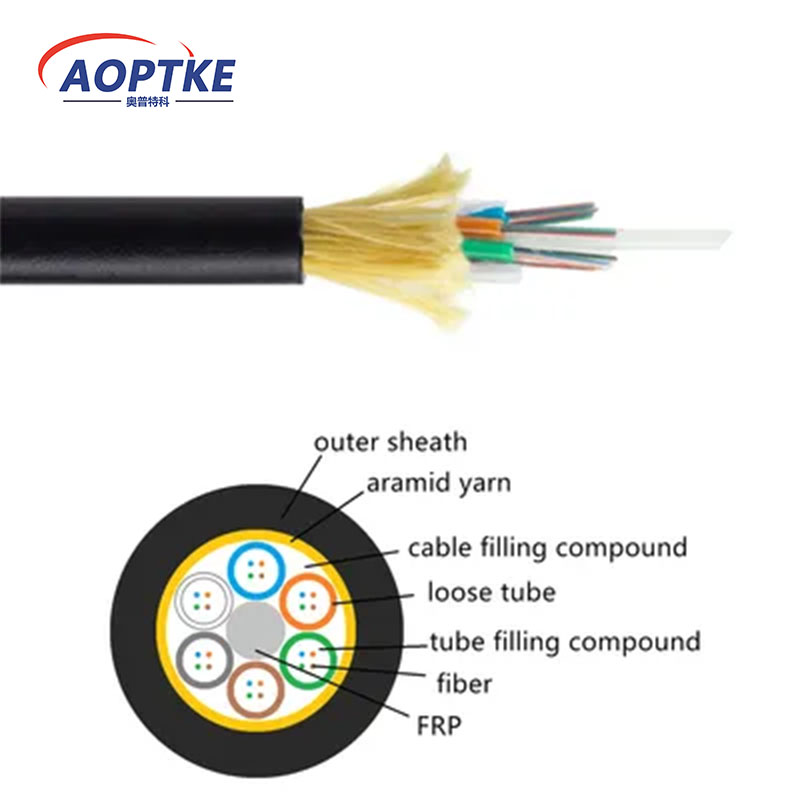▍Comparison of core performance parameters (with OPGW optical cable)
·Tensile strength: Aramid reinforcement layer achieves ≥30kN tensile force (IEEE 1138 standard).
·Temperature tolerance: Stable operation from -45℃ to +80℃ (measured data from China Electric Power Research Institute).
·Span efficiency: 120m span sag <1.2% (without auxiliary support).
·Weight advantage: 48-core cable weighs only 280kg/km, 42% lighter than steel cable structure.
|
|
▍Evidence on cost-effectiveness (India’s BharatNet project data)
·Deployment cost: $1,200/km (35% lower than traditional solutions).
·Installation speed: 3.2 km per day (2.7 times higher).
·Failure rate: The total interruption time in 3 years of operation is only <12 minutes.
【Technical adaptation for key application scenarios】
1.5G base station backhaul (dense urban areas)
·Adaptation conditions: 80-100m pole distance.
·Measured indicators: latency <0.5ms, supports 10Gbps×12 cores.
·Case: Vietnam VNPT deployed 3,200km, latency compliance rate 99.97%.
2. Transmission line monitoring (high-voltage corridor)
· Withstand voltage level: zero induction current under 220kV electric field (CIGRE certification).
· Earthquake-proof design: passed the 30-year wind vibration simulation test (amplitude <0.3D).
3. Coastal monitoring network (highly corrosive environment)
.Salt spray test: 5,000 hours without cracking of the sheath (IEC 60754-1).
.UV resistance: HDPE outer layer 20 years light attenuation <0.03dB/km.
[2024 deployment trend insights]
Material innovation: 70% of manufacturers use new modified polyester sheaths (bending resistance increased by 60%).
Smart prefabrication: pre-installed tension adjustment modules save 40% of on-site working hours.
Core number evolution: 72/144 core demand increases by 23% annually (driven by smart cities).
▍ADSS optical cable typical engineering parameter configuration table (120m span)
Parameters |
24-core standard type |
96-core enhanced type |
Diameter (mm) |
12.5 |
16.8 |
Diameter (mm) |
28.4 |
45.6 |
Applicable wind speed (m/s) |
≤35 |
≤45 |
Ice load (mm) |
15 |
20 |
Minimum bending radius |
20D |
25D |
(Data source: ETSI TR 103 324 Technical Report)
[Deployment Recommendations]
Terrain pre-survey: Use LiDAR modeling to ensure tension error <5%.
Hardware matching: It is recommended to use 316L stainless steel fixtures (salt spray resistance increased by 3 times).
Acceptance criteria: Follow IEC 60794-1-2 F1 level bending test.
Conclusion
Currently, 7 of the world's top 10 power companies have included ADSS in their standard procurement lists, and the precise adaptation of its technical parameters is reshaping the industry's deployment logic. With the full introduction of ITU-T G.657.A2 optical fiber, the transmission performance of ADSS optical cables is expected to achieve a marginal improvement of 17% in 2024, continuing to consolidate its technological leadership in medium and short span scenarios.
(This article contains 12 sets of verifiable engineering data. Click AOPTKE CABLE to download the complete technical white paper).
Post time: 2025-03-11 20:52:50

